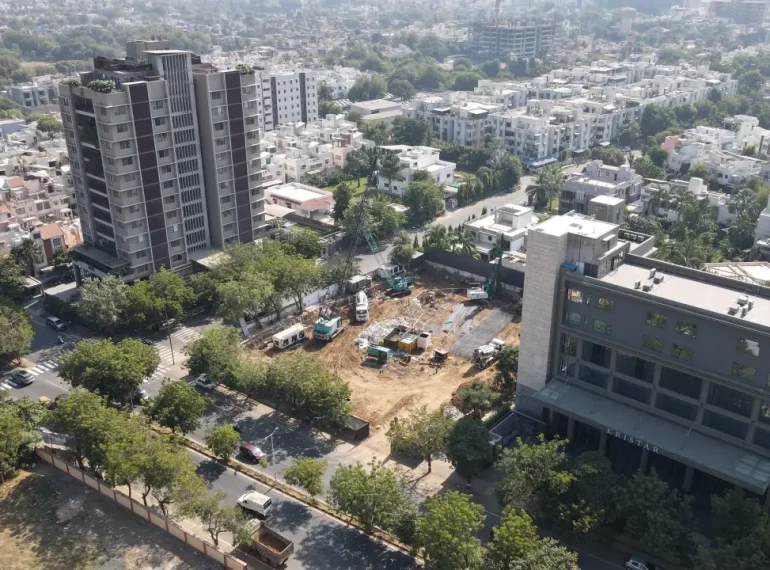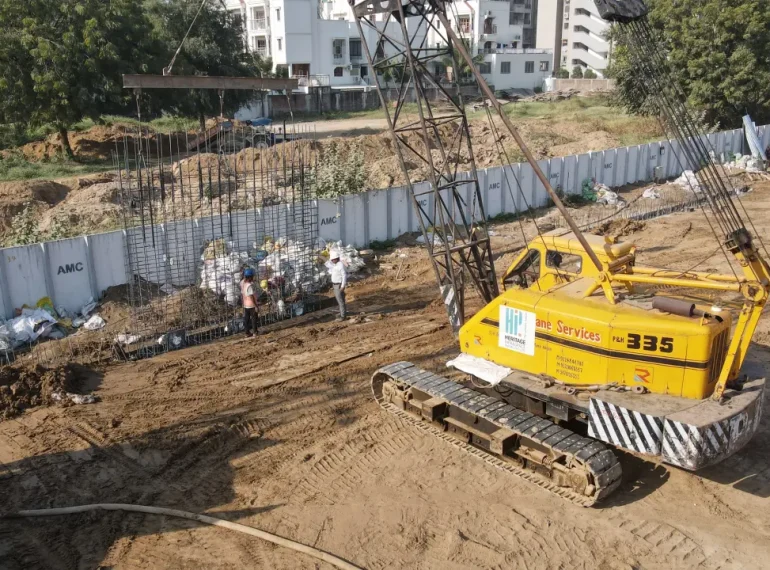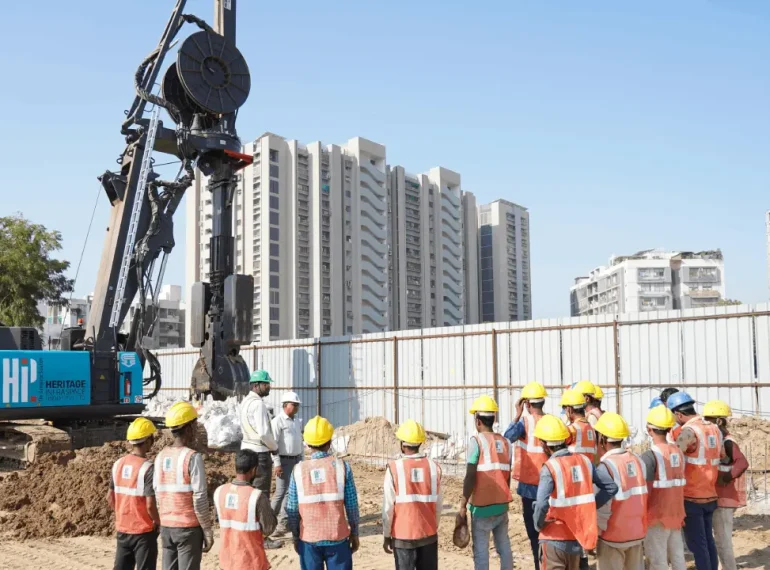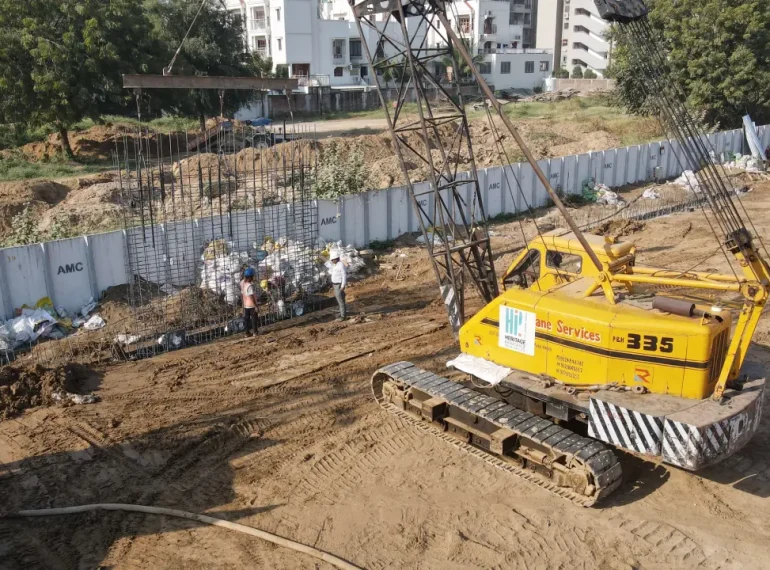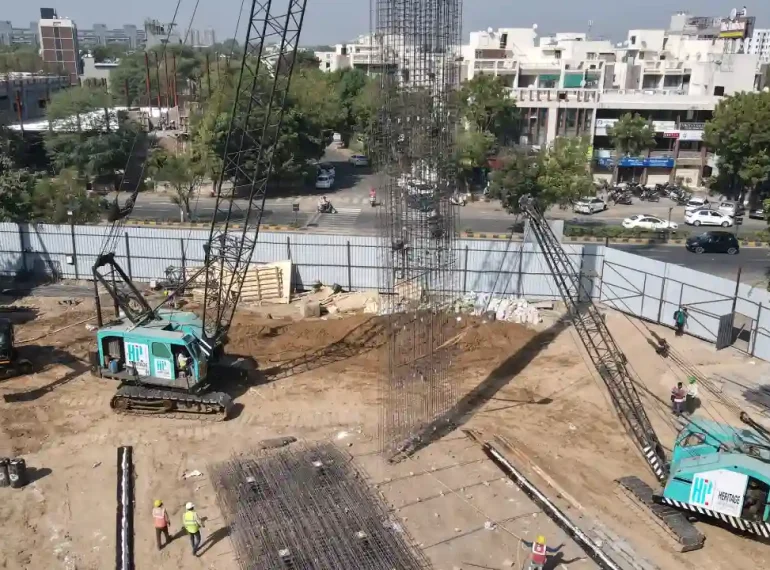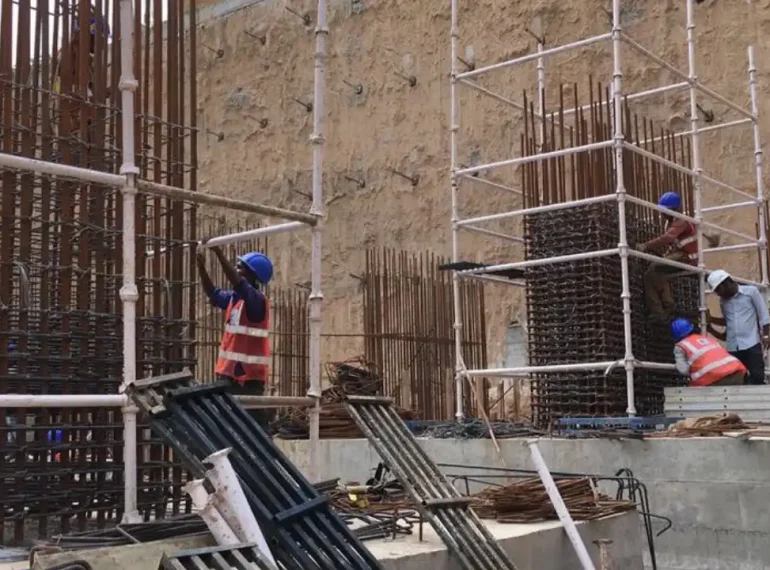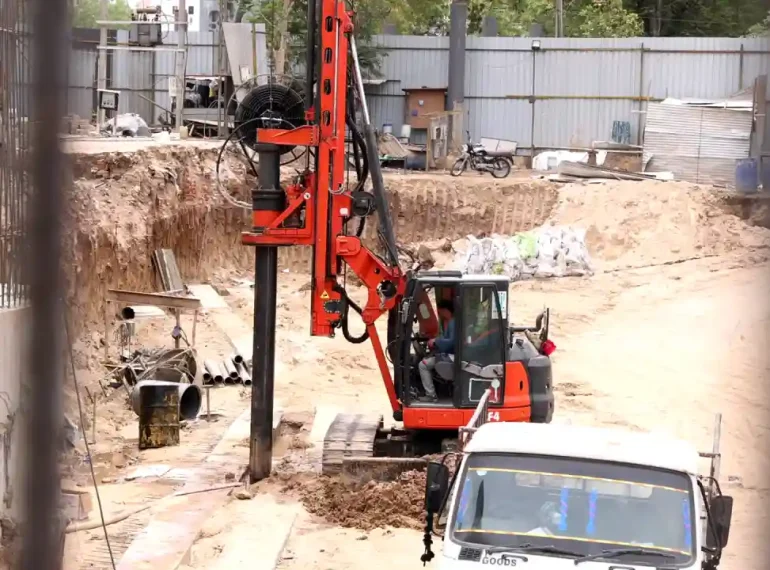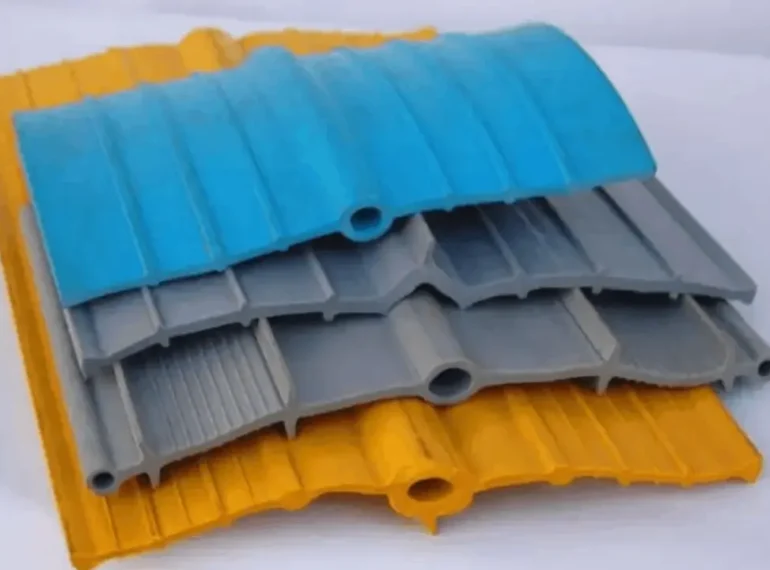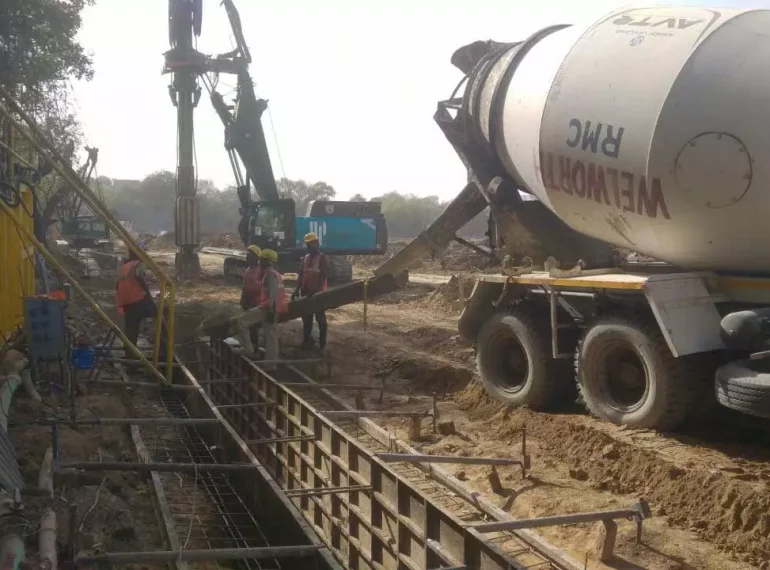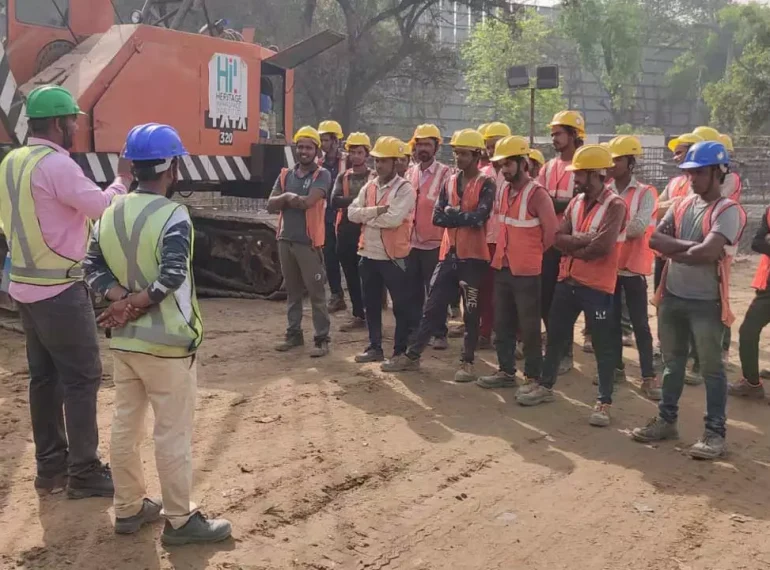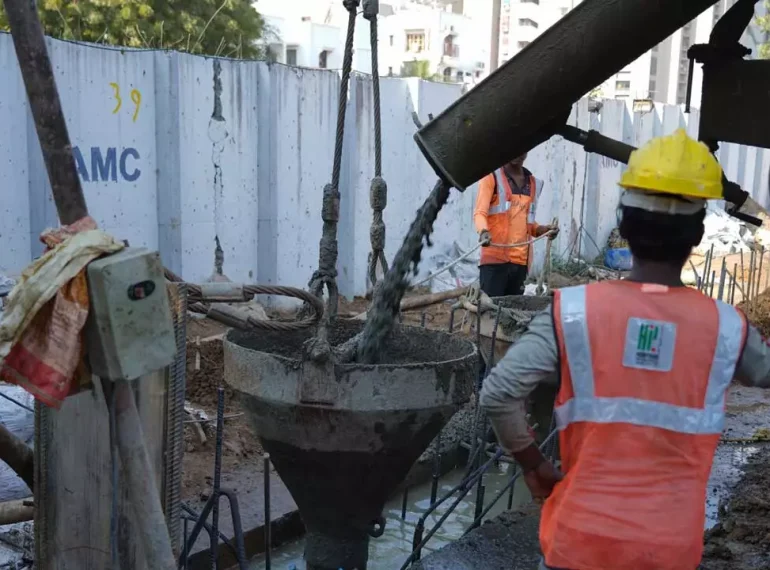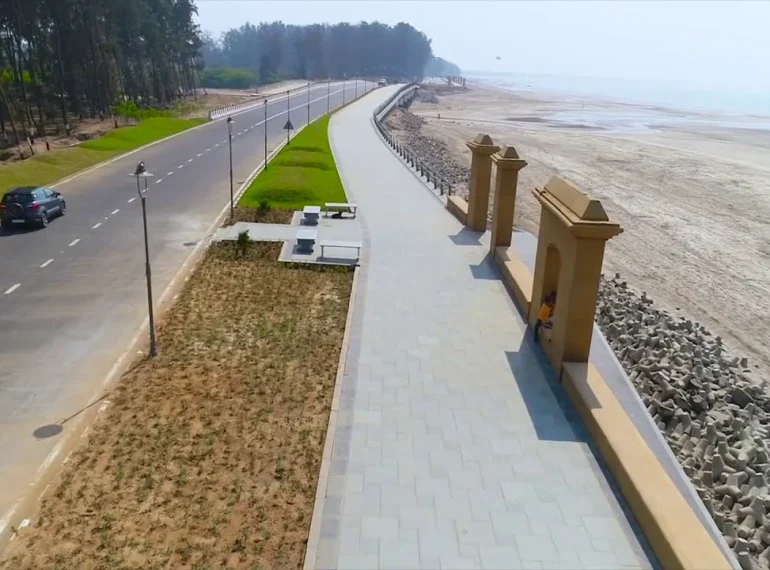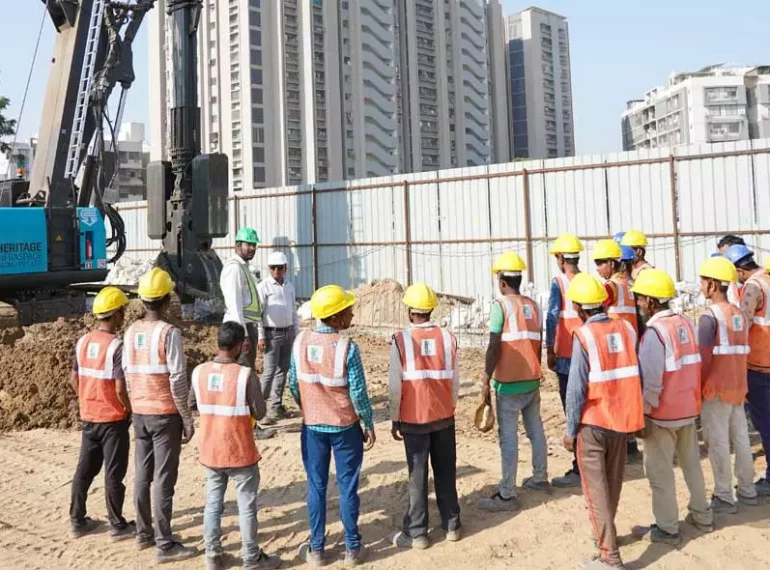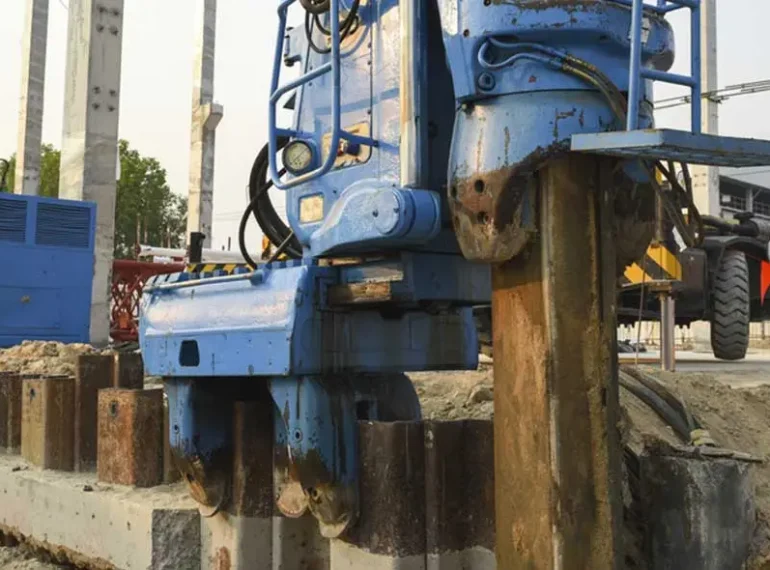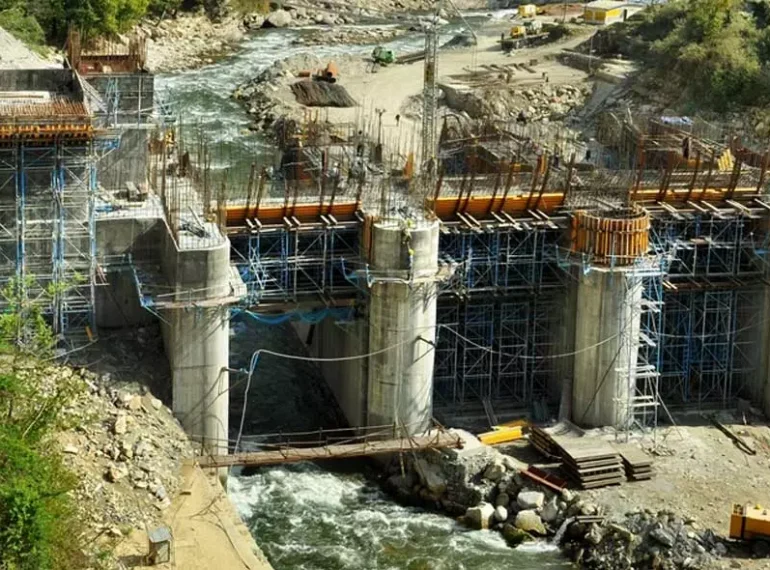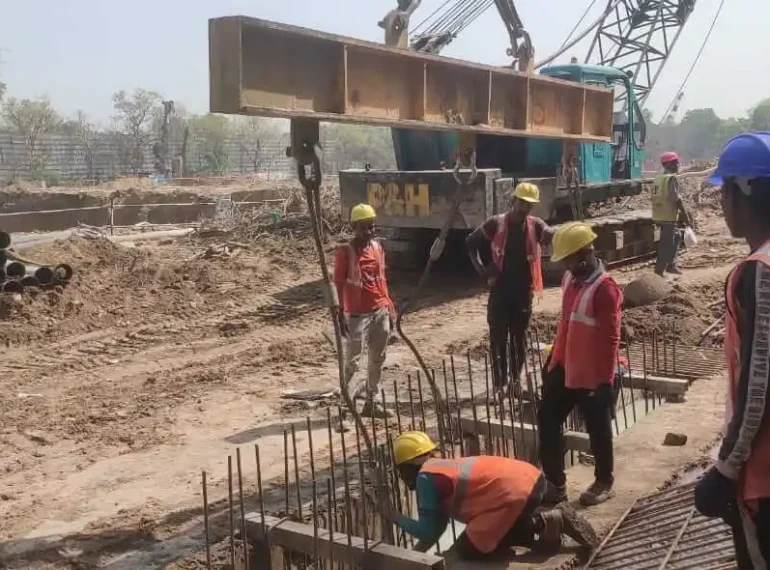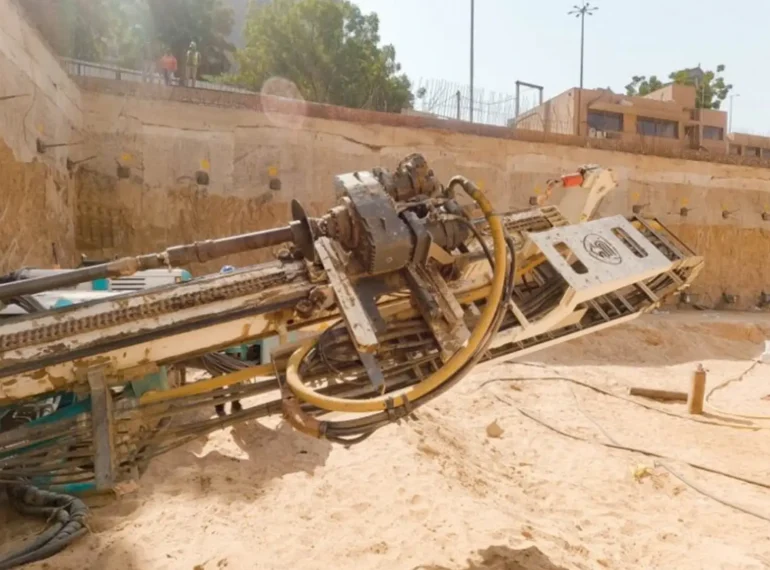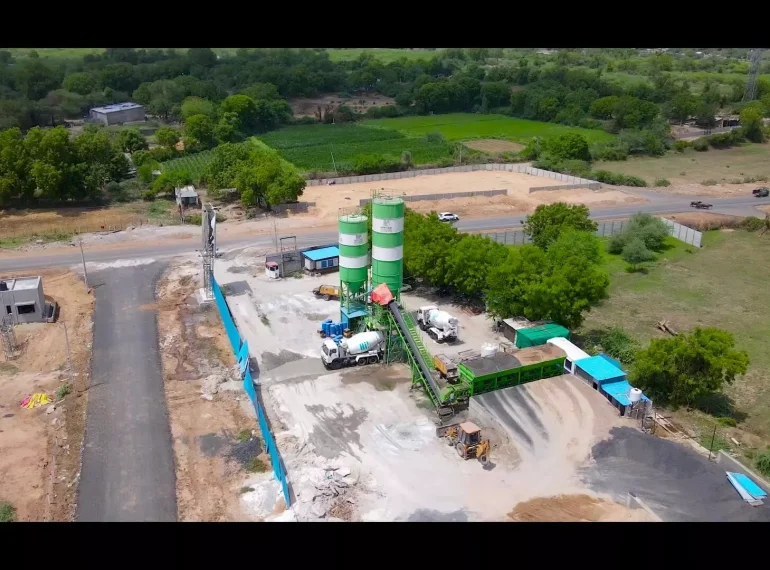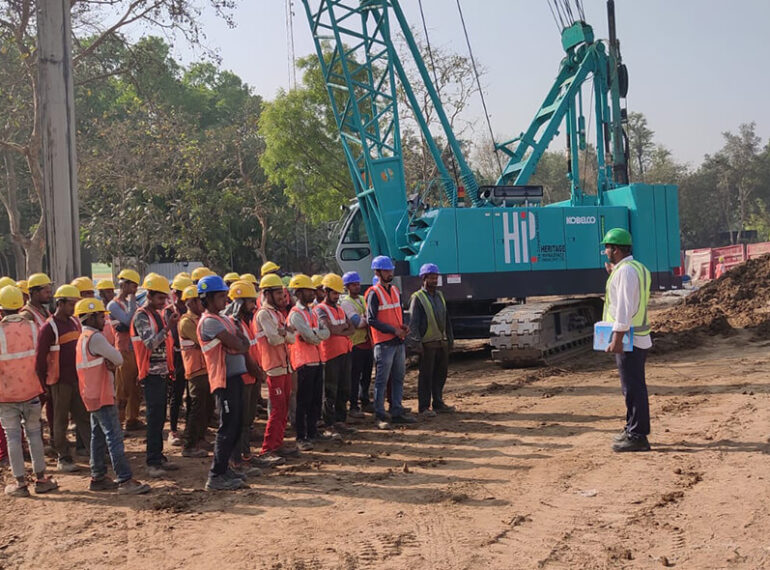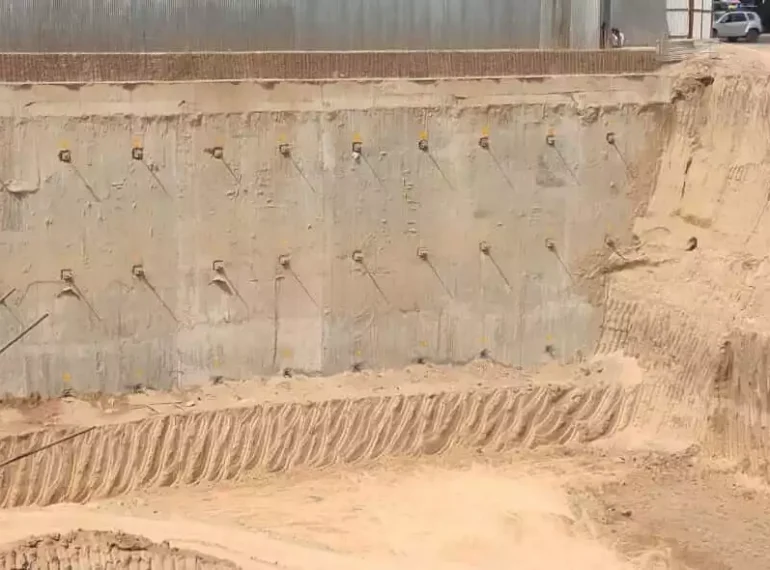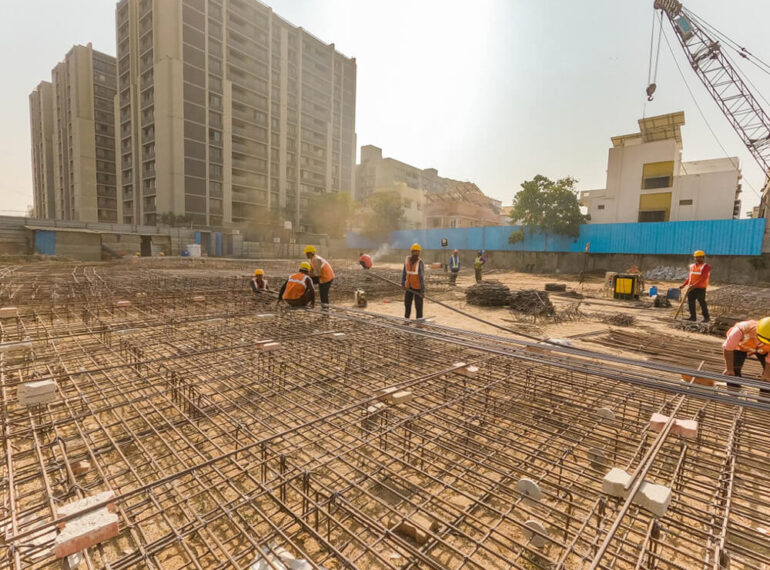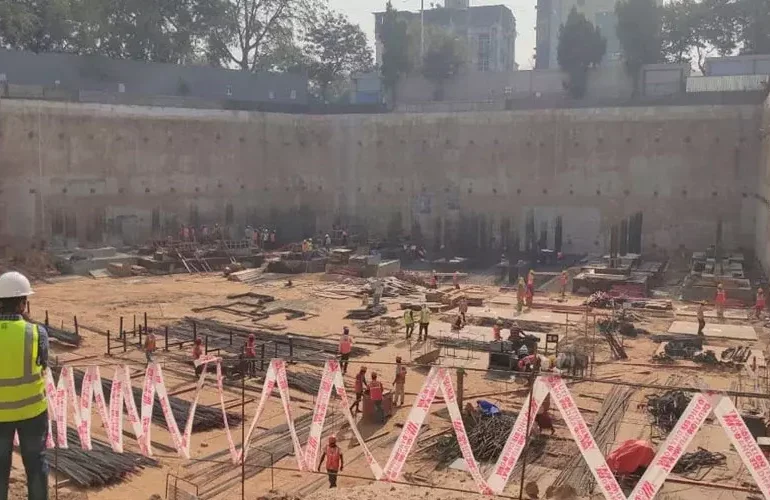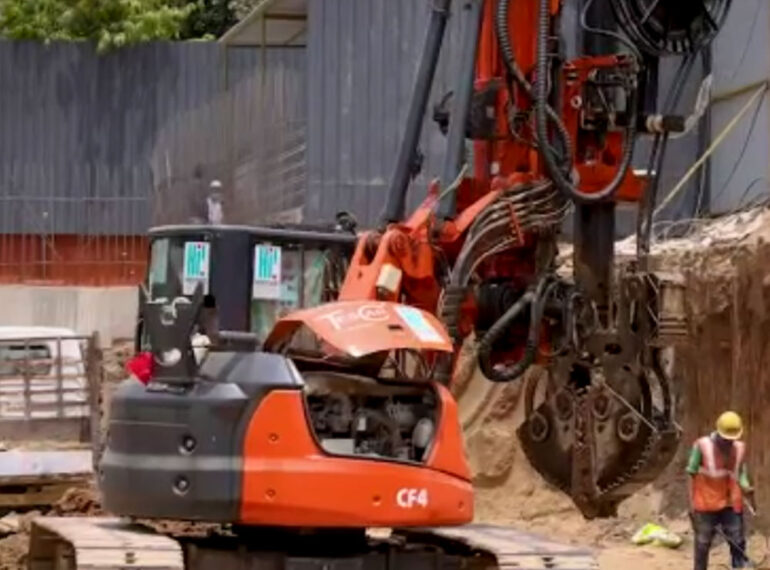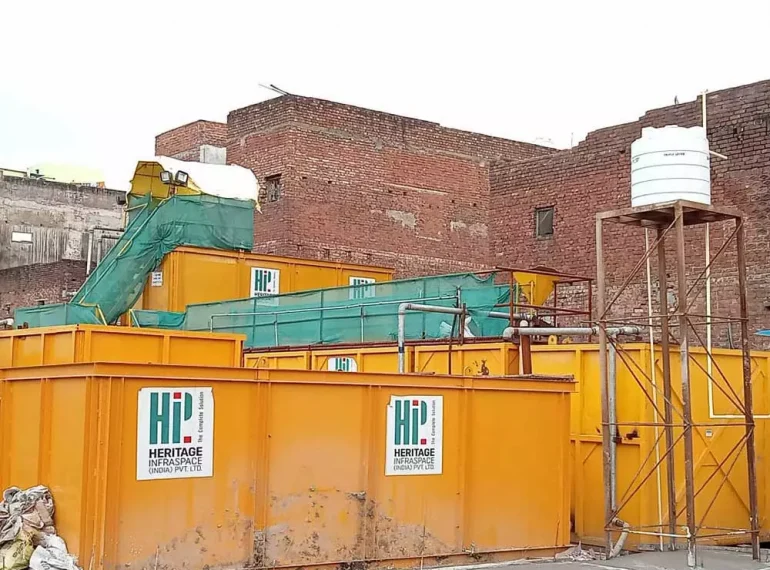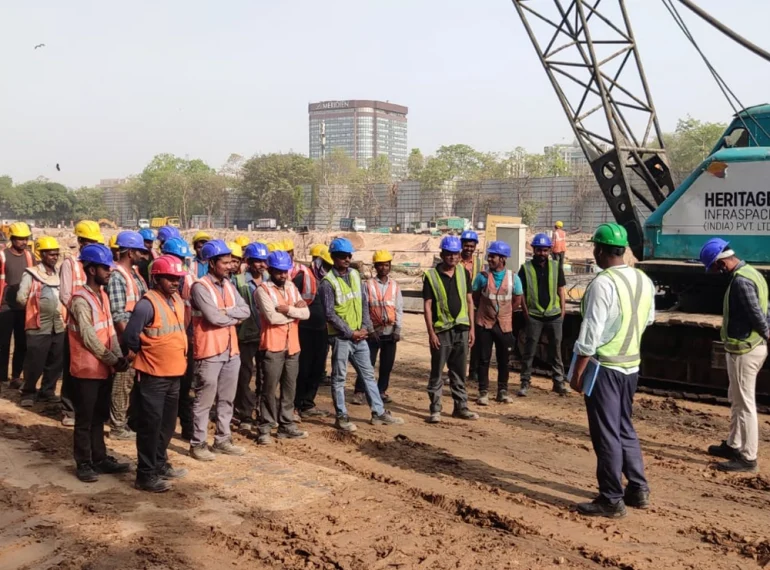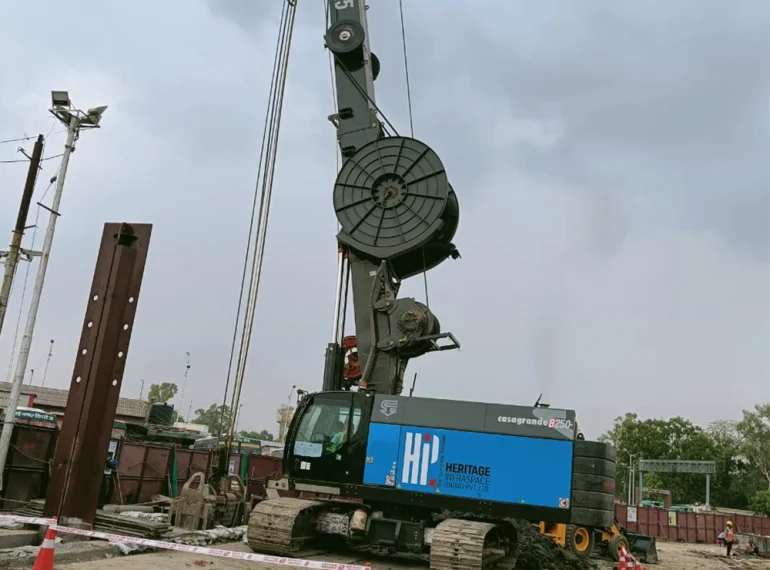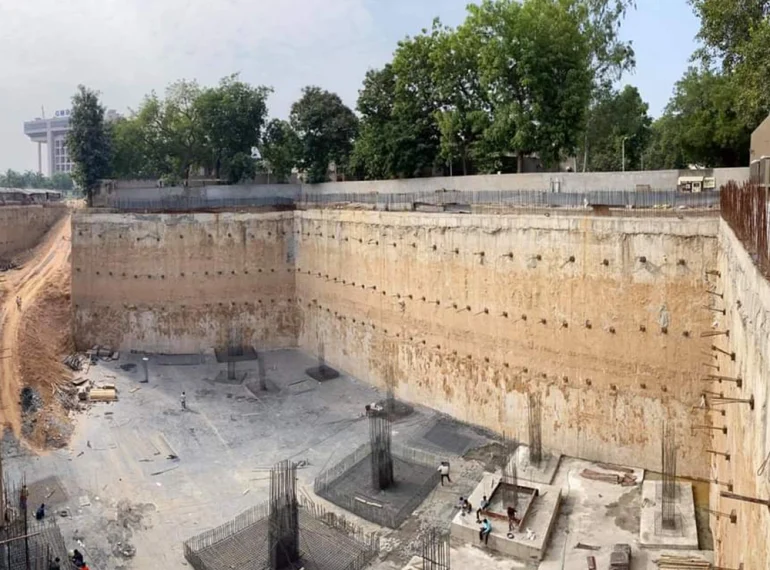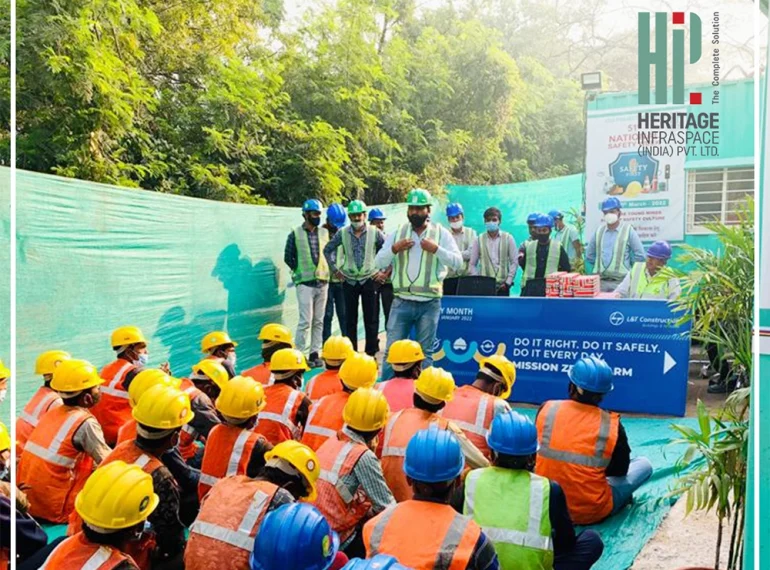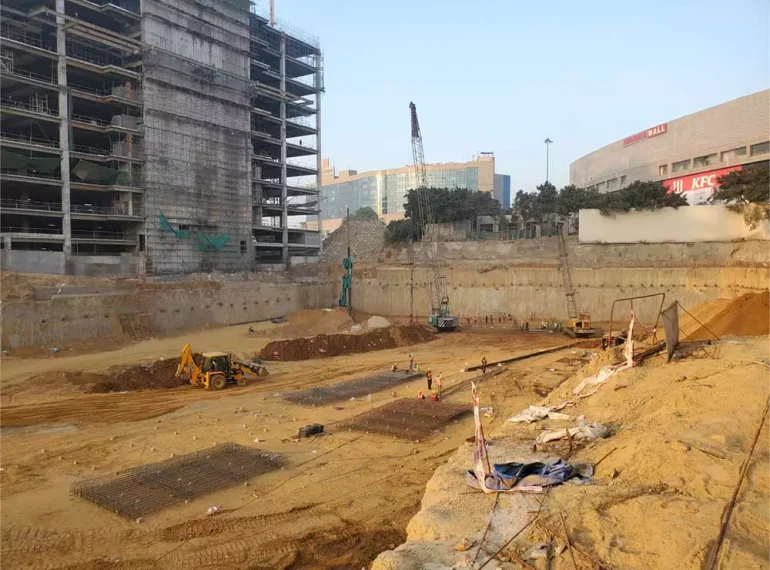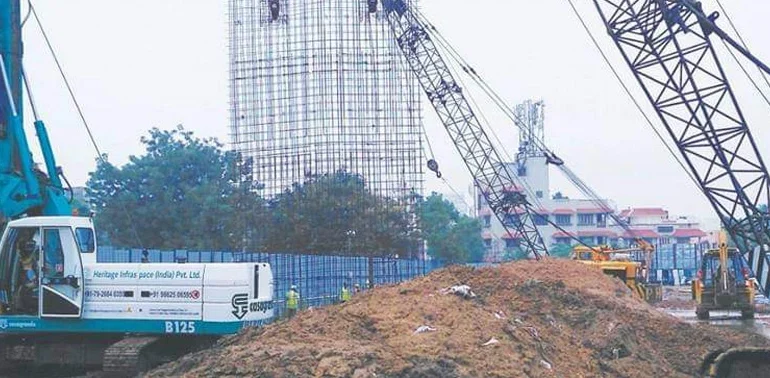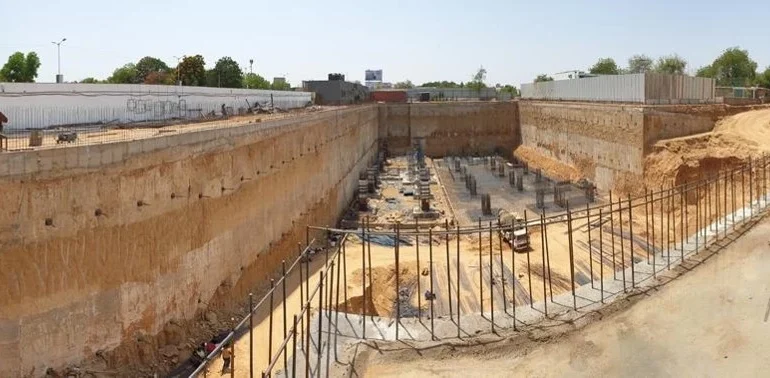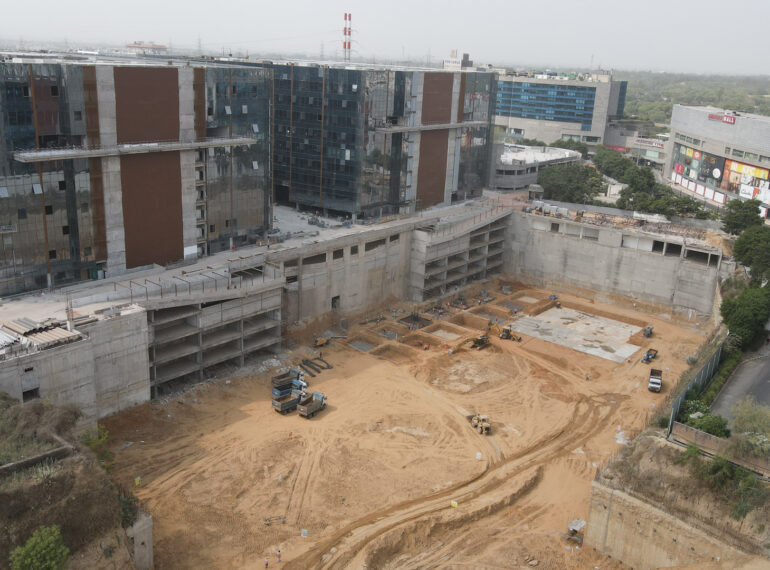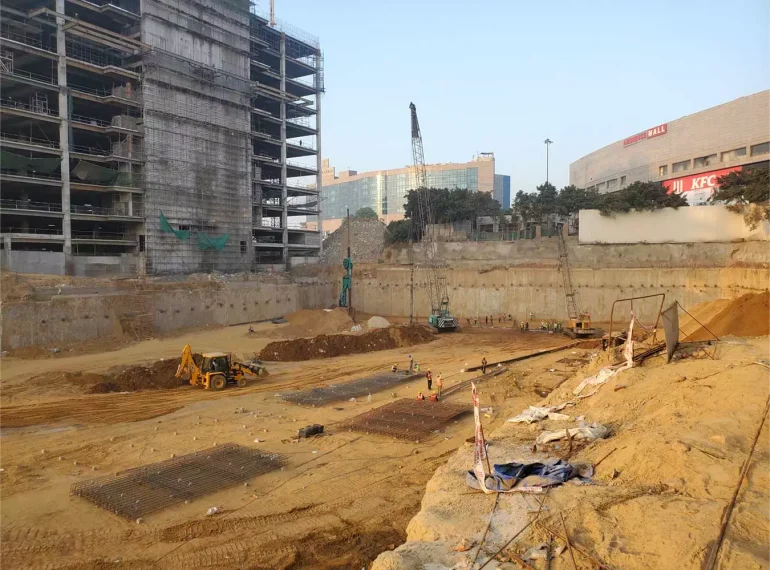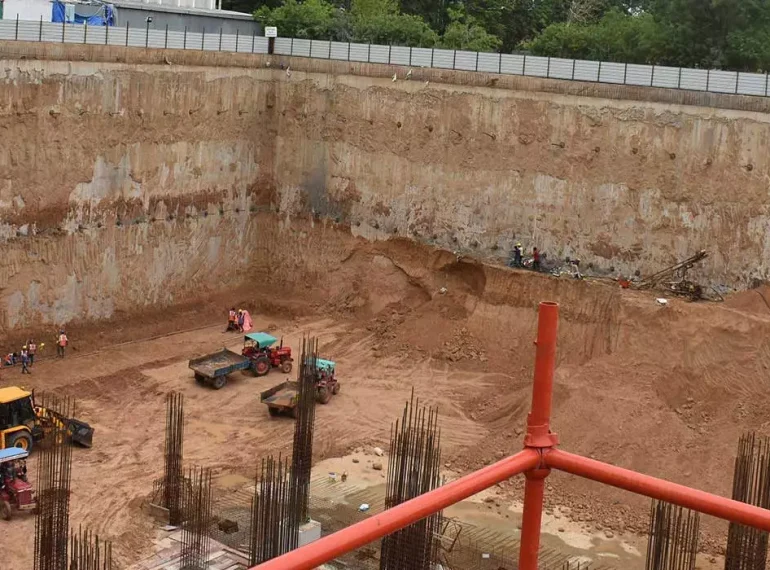Residential complexes with multiple apartment buildings and commercial complexes with hundreds of offices and shops are now a part of the landscape of every growing city in India. And these new-age buildings have multistoried basements built deep into the ground for various purposes. These deep basements require diaphragm wall construction to ensure that they have a formidable foundation.
Read on to know about the advantages of concrete diaphragm wall construction for deep basements in all forms of modern buildings.
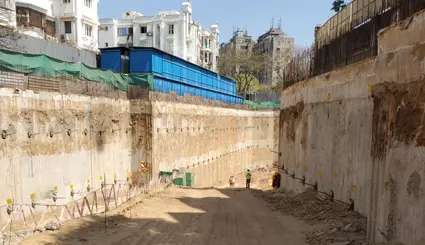
What is diaphragm wall construction?
Diaphragm walls are reinforced concrete walls constructed for deep basements in the ground. An under-slurry technique involving the excavation of a narrow trench is used for this and walls with thicknesses ranging between 300 mm to 1200 mm can be formed as deep as 45 metres underneath for the next stage of excavation to be conducted.
Advantages of diaphragm wall construction
Build basements of significant depths
A growing population means taller and bigger residential and commercial complexes, which in turn require equivalent parking space. Basement parking lots are an ideal solution to this problem. Earlier, the deep basements would be built up to 3 floors through piling methodology. But with diaphragm wall construction technology, developers are now building basements as deep as 5 levels.
This is because piling would increase the number of joints, might have alignment issues and risk having leakages, but deep basement concrete diaphragm walls serve as a strong foundation as well as protective walls to these basements.
And more space for parking means these commercial and residential properties will be in higher demand compared to the ones with lesser or no parking space.
Construction produces low vibration levels
Another of the great advantages of diaphragm walls is that their construction causes very less vibration to the land and hence minimises the risk of damage to nearby structures. Open excavation involves using heavy machinery like drilling machines, earth movers, etc, which may weaken the foundation of the overall soil on the site and put neighboring buildings at risk of irreparable or hefty damages.
HIPL’s fleet of machines has the best hydraulic rigs manufactured by Casagrande, imported from Italy. This is one of the many things that makes HIPL one of the best diaphragm wall construction companies in India.
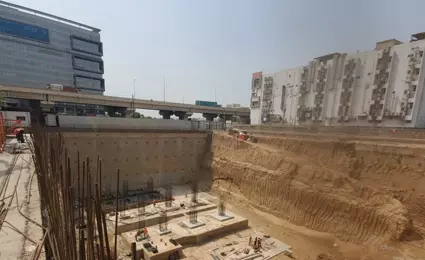
Concrete diaphragm walls can act as water barriers too
The water table of the soil in various regions of India varies from moderate to very high. And as the construction gets deeper, the water pressure can increase and cause damage to the basement structure. Concrete diaphragm walls can act as good barriers to water pressure, thanks to the water bars and crystalline compound used in the mix.
One of the best examples of it is the Sabarmati Riverfront promenade, where the underground diaphragm walls prevent any form of water damage to the structure outside, despite being built next to a water body.
In areas with high water tables, our engineers suggest the developers get a proven waterproofing agency on board, to ensure there is no room for error in the construction and future-proofing of the structure.
Safety of the structure and the manpower
Safety is one of the biggest advantages of diaphragm wall construction. Firstly, it is safe for the personnel involved in the construction of a deep basement. Since diaphragm wall construction involved digging a narrow trench, unlike open excavation, the risk of wall or soil collapse is close to nil. As a result, workers can confidently and effectively work towards building deep basements.
The second aspect is that the diaphragm walls provide a stronger foundation for the superstructures, ensuring the safety of the people who’d be residing or working in them.
Quality of the structure
Modern buildings built with basements constructed having diaphragm walls are stronger than the ones built through piling technology, as established in this article earlier. Piling requires a retaining wall to be built to support it, while diaphragm walls act as a retaining wall and a part of the building structure too.
In conclusion
There are many advantages of diaphragm wall technology being used to build deep basements. One of the best examples of it are the projects like Venus Stratum and Z2 in Ahmedabad, both having diaphragm walls constructed by HIPL, the pioneers of diaphragm wall technology in India, for its 5-level deep basements.
Given the success of diaphragm wall technology in modern construction, many developers may consider building deeper basements to match with the rising demand for space in commercial and residential projects. And this technology holds the merit to make such plans happen in near future.
Reach out to us at info@www.heritageconstruction.in to work with us for your next residential or commercial construction project. We are active pan-India and have a track record of completing projects in record time under the strictest of deadlines. Read more about our work here.




